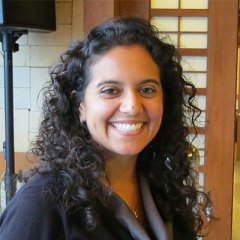Beeline Reader
Inappropriate social interactions. Compulsive behavior. Poor eye contact. Obsessive interests. These traits are typical symptoms of autism, a common social-communication disorder affecting approximately 75 million people worldwide — more than the entire population of the UK.
In some developing countries, autism’s social implications are severe. Many autistic children are labeled insane or possessed. At best, they’re marginalized and neglected. At worst, they’re murdered.
Around the world, autism patients face social stigma, and the challenges of providing care can be draining. But the burden of autism is more than just personal; the economic impact is immense.
Autism prevents many people from joining the workforce. In the US alone, this leads to an economic loss of $175 billion per year. When considering direct medical, direct non-medical, and productivity losses, the forecasted costs associated with autism are estimated to reach $461 billion in 2025.
It doesn’t have to be this way. Therapy can significantly decrease the symptoms and severity of autism, but early detection is crucial for treatment to be effective.
Oren Miron and his research team at Harvard Medical School are enabling early detection. They’ve developed a cutting-edge solution, giving hope back to millions of families affected by autism. All it takes is a simple, inexpensive test.
Autism Detection’s Race Against Time
Autism often goes undiagnosed until as late as age four. By this time, much of the brain’s flexibility has already been lost, rendering most therapies less effective.
However, the prognosis brightens with early detection. In cases where the disorder was diagnosed at age two, early treatment drastically reduced autism severity, enabling individuals to join the workforce and lead productive, stable lives as fully-functioning adults.
Miron’s game-changing solution wastes no time at all: it detects autism at birth.
A Ground-Breaking Idea Using Existing Data
The Autism Detection at Birth solution is amazingly simple. It’s based on an existing test, Auditory Brainstem Response (ABR), used to screen hearing impairment in newborns.
In this test, administrators use handheld screening equipment and place electrodes on a baby’s head. Earphones cover the baby’s ears and a series of frequencies are emitted. A computer records auditory nerve reactions as they occur in response to the sounds. The test is so gentle, a baby could sleep through it.
About 10 years ago, the test became routine for infants born in the US and is rapidly becoming more common around the world. Nowadays, ABR is used on four million newborns each year globally, and massive amounts of data about auditory nerve reactions have been collected.
Miron’s team analyzed this data from a new perspective, looking at which babies later developed autism. A pattern emerged: in autistic newborns, response times were much slower.
In turn, Miron’s team developed an algorithm that detects autism based on auditory nerve response times. Since then, they’ve replicated this test on 50,000 newborn babies with very high accuracy.
Now they seek to apply their algorithm to all ABR tests, effectively turning every hearing screening into an autism test for newborn babies.
The Payout of Autism Detection at Birth
An estimated one percent of newborns are autistic. If the four million babies who receive an ABR test each year are also screened for autism, almost 40,000 children will receive an early diagnosis, opening the door for early — and hopefully more effective — treatment.
Oren and his team hope their test will improve the quality of children’s lives, as well as save an estimated $1 million per child in treatment costs and economic losses throughout their lifetime, pumping $40 billion back into the economy each year. And as the use of ABR tests expands around the world, the team expects the benefits of Autism Detection at Birth to grow with it.
The Autism Detection at Birth test costs next to nothing. It takes no additional time. It’s safe, non-invasive, and sustainable. In developed and developing countries alike, Autism Detection at Birth will help millions of children break through the barriers of autism and lead happier and healthier lives.
Feeling inspired? Find out how you can support Solver teams like Miron’s by joining our community as a Solve member.
Oren Miron pitches Autism Detection at Birth at the Solve Challenge Finals in the Brain Health Challenge, September 17, 2017. (Photo by Samuel Stuart / MIT Solve)







